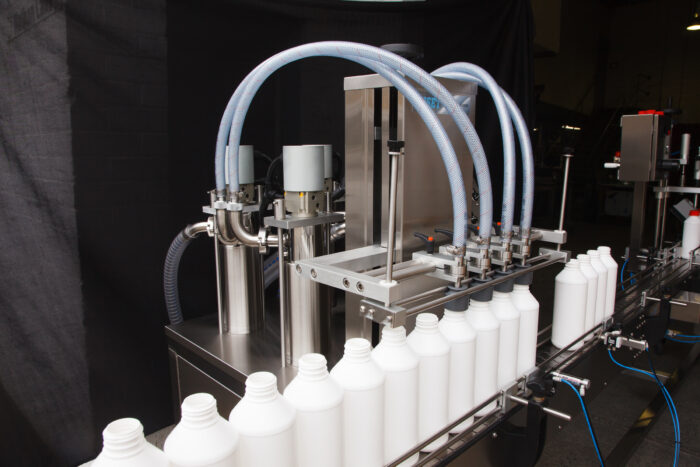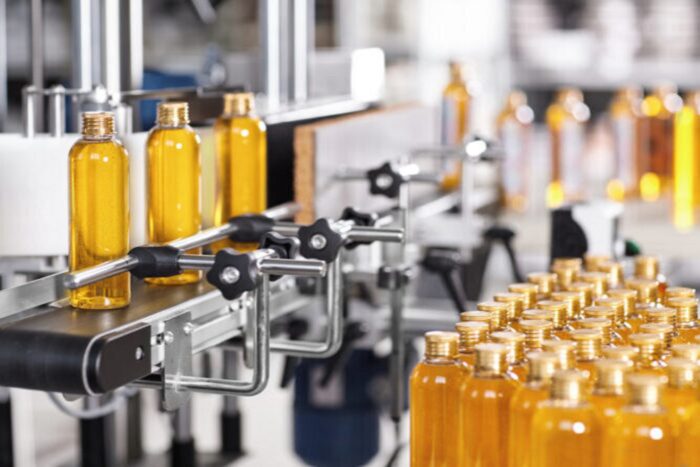For Australian businesses, large or small, buying a liquid filling machine is a significant investment. Filling machines bring a number of advantages, including higher efficiency, lower labour costs, and increased competitiveness.
However, choosing the right option requires careful thought and understanding exactly what you want to achieve. If your goal is to maximise output or product consistency, it’s important to know which type of filling machine is best for the job. At some point, you will discuss your needs with suppliers, so answering a few simple questions will make sure they understand your business and goals.
1. What are your product characteristics?
The characteristics of the products you will be processing, more than anything, dictate the type of filling machine you need. The right machine will fill containers efficiently and accurately, while the wrong option will jam or fail to fill containers consistently.
Viscous liquids and suspensions
Liquid viscosity is one of the main considerations when looking for the correct liquid filling machine. Sticky, viscous liquids can clog filling heads, and the machine can actually affect the product’s characteristics. For example, extra pipes and pumps can thin the liquid. Suspensions or liquids containing pulp or particles need machines with special adaptations to prevent clogging.
Other filling machine adaptations
Foaming liquids require bottom-up filling nozzles and a gentler gravity feed system, while carbonated liquids use a counter pressure system to preserve the carbonation of the liquid. Finally, your supplier will want to know if you fill containers with liquids at high or low temperatures so that they can suggest the right liquid filling machine for your operations.
2. What container are you using?
The type of container you’re using is also important. The characteristics of the container must match the machine’s delivery and handling methods.
Materials
The material influences the type of machine and configuration you need. For example, thin plastic containers can be harder to manipulate due to deformation, whilst a glass bottle might slide on a slatted conveyor system underneath the filler head.
Size
The size of a container will also dictate the type of machine you need. Small vials of cosmetics or pharmaceuticals? You’ll need a smaller cylinder machine like the Asset Packaging AV3-2C. Large tanks of industrial chemicals? Have a look at the bigger AV5-2C.
An experienced packaging machine supplier like Asset Packaging will be able to guide you through the right selection of machine and configuration.
3. What production capacity will you need?
Naturally, understanding the desired production capacity shapes your expectations of what a machine should deliver. Manufacturers provide a rate using a metric such as bottles per hour for slower machines, or bottles per minute for fast machines. However, these rates usually reflect optimal conditions and depend upon other production processes.

For example, if you cannot feed containers into a machine quickly enough, or cannot pack the final product quickly enough, your machine won’t operate at this maximum. A reputable supplier will calculate a more reasonable maximum and help you decide if you can upgrade any other processes.
Manual or automatic filling machines
Your supplier can also help you decide whether to opt for a manual, semi-automatic, or fully automatic liquid filling machine. Manual filling machines are useful for start-ups or small businesses, helping them keep up with small orders. If your business grows, you can always upgrade later on.
Automatic machines are excellent for high production rates with little manual intervention, but they are more expensive, require integration, and need more maintenance.
Planning for the future
It is important to think about future growth, because you may well end up needing an expensive replacement if your machine cannot cope with increased demand. Some machines let you upgrade the number of heads, while companies like Asset Packaging Machines rent out machines to help you fulfil peak orders.
4. Is integration required with other machines?
Your supplier can help you integrate your new filling machine with your existing production equipment and suggest any changes to your processes. For example, the production line may need extra conveyors to move products, extra staff for packing, or a faster capping machine.
Very few businesses actually upgrade their entire system at once, so you also need to allow for future upgrades. Otherwise, you risk buying a machine that will become obsolete once you upgrade other areas.
For hazardous products, a filling machine must fit into your safety protocols, while machines for clean rooms must emphasise hygiene and cleaning. An experienced supplier, like Asset Packaging Machines, will help you assess your entire business processes to target the right machine and improvements.
5. What filling accuracy do you need?
Depending on your product and target market, filling accuracy is either fairly important or absolutely crucial. For pharmaceuticals where dosage is critical, or high value products like cosmetics where overfilling cuts profitability, a high level of filling accuracy is essential for your business. Accordingly, you need a machine with clearly defined variances that fall within your product tolerances.

6. What about hygiene and cleaning?
Finally, liquid filling machines need regular cleaning to operate perfectly and maintain hygiene. If you work in cleanroom environments or with food, your supplier will suggest a machine that you can dissemble quickly for cleaning to prevent any build-up of contaminants and microbes.
Similarly, machines need maintenance, which can cause loss of profits if this requires downtime. Some types of machine are more complex and need highly trained staff. Of course, you could hire a liquid filling machine with maintenance as part of the contract.
The next stage
Hopefully, these six questions have given you an insight into what you need from a filling machine, and you and your machine supplier will be able to make the right choice. Of course, this is just the start of the process, and a vendor can help you assess your needs, existing processes, and plans from the beginning.
A reputable manufacturer, like Asset Packaging Machines, will help you decide whether renting or buying is best. They will help you maximise your return on investment and avoid throwing money away on liquid filling machines that are not up to the job.
At Asset Packaging Machines, we have experience across a range of sectors and with businesses of all sizes. If you want to find out how, where, and when to use the right machine, contact us and we will be delighted to answer your questions.












